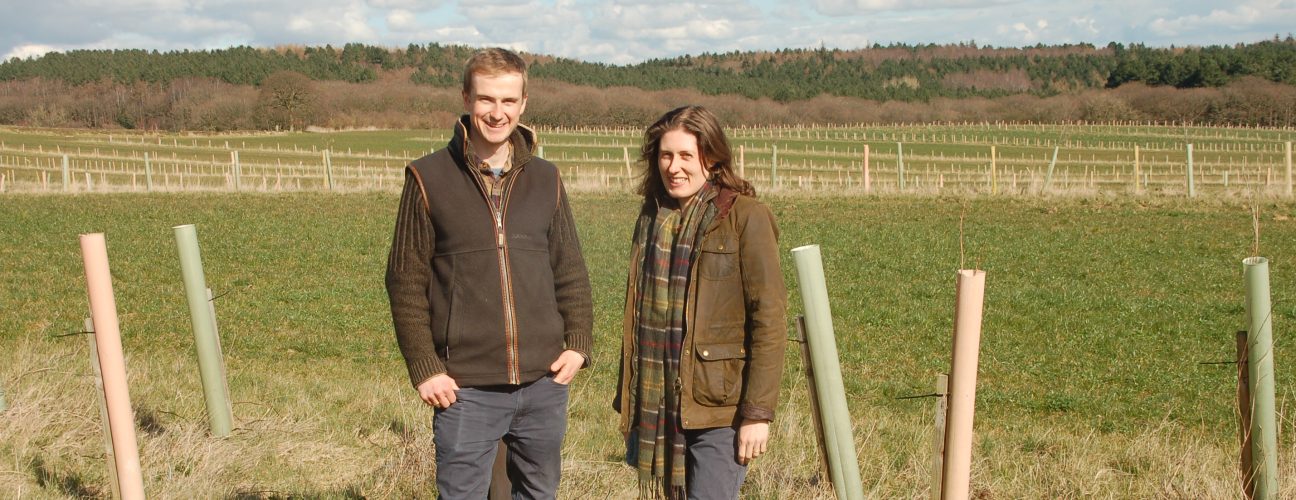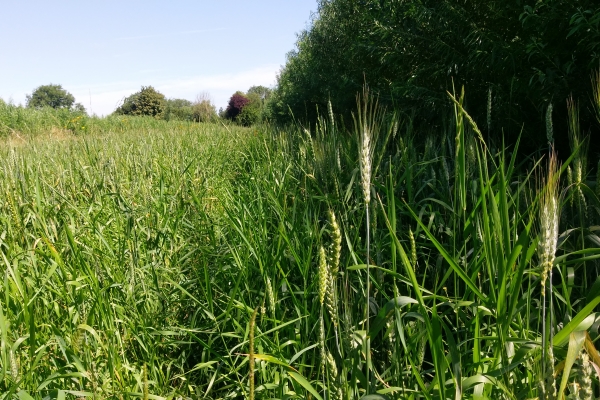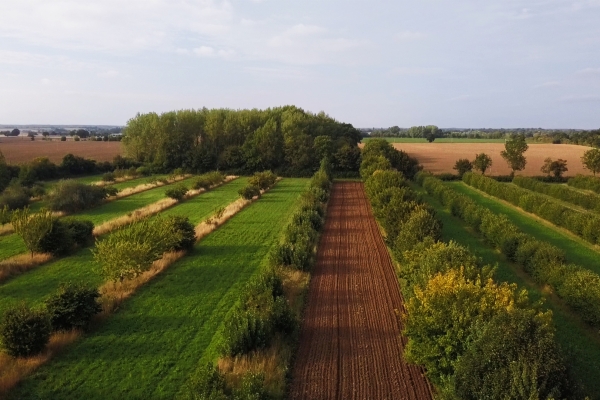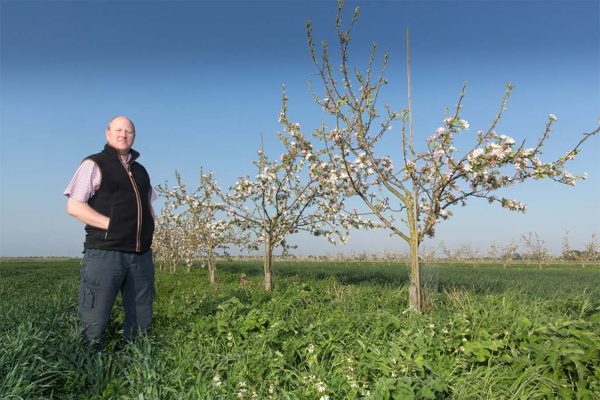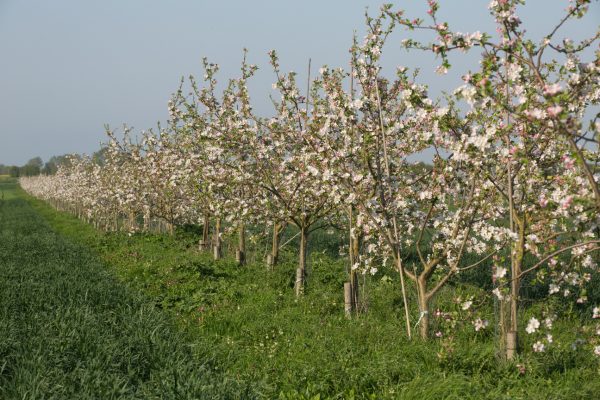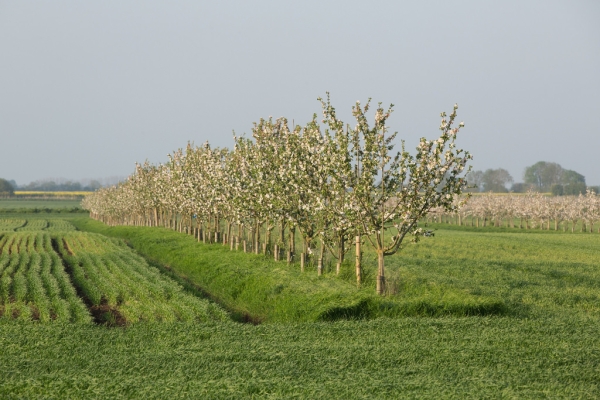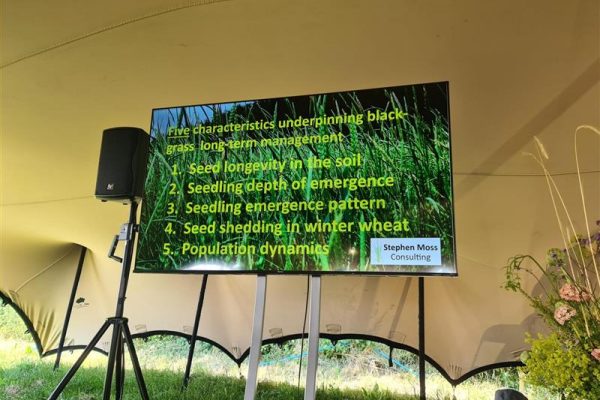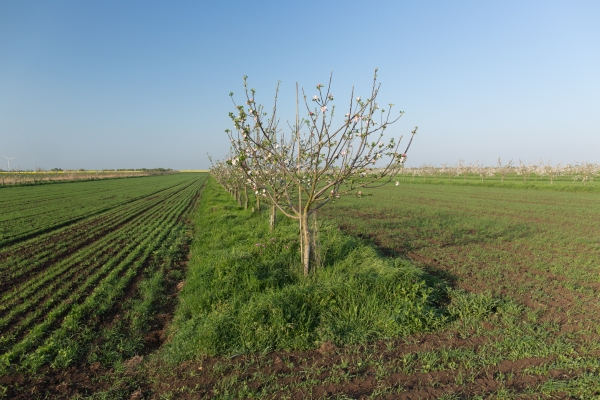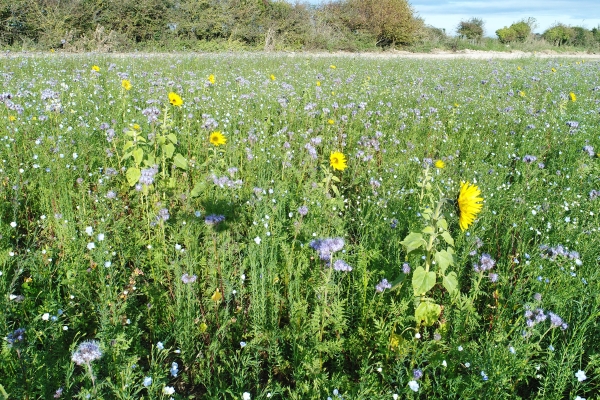Alex and Hannah Fraser
Denby Hall Farm, Denby Dale, West Yorkshire
We are first-generation organic arable farmers. In 2018, we were fortunate to take on our first block of land which was 280 acres / 113 hectares (ha). The farm had previously been a tenanted conventional arable farm. The farm has been owned by our family for generations but always tenanted, never farmed by family members. My parents, who now own the land, were keen to see the farm transitioning to more ecological principles, and Hannah and I jumped at the chance to take the farm in that direction. At that point, we were both studying at Edinburgh medical school. In 2023, we were able to take over management of the neighbouring farm, increasing our total farm area to 480 acres / 194 ha.
Early on, we decided to covert the land to organic production, and we began the certification process in 2019. We felt organic farming was a first step toward farming in a way that could better the health of the environment, climate, water quality, biodiversity. We work very closely with a local farming family (father and two sons) who have a dairy farm and a growing contracting business. They own most of the machinery and carry out the field work whilst we make the management decisions. It’s a really effective and important partnership.
We were very fortunate to early on meet Stephen Briggs, a fellow organic arable farmer, who has been a brilliant mentor. A big part of our success is down to Stephen who really helped to guide us on how to farm organically.
Our approach uses organic as the foundational principles, but we are trying to push further, adopting regenerative principles including doing as minimal tillage as possible, covering and protecting the soil by planting lots of cover crops, and incorporating things like the agroforestry system and flying flocks of sheep over the land. A lot of our management practices come down to thinking about soil health – we realise it is so crucial to having a successful farm. The herbal leys we plant do wonders for the soil health – we can visibly see the changing soil structure and colour.
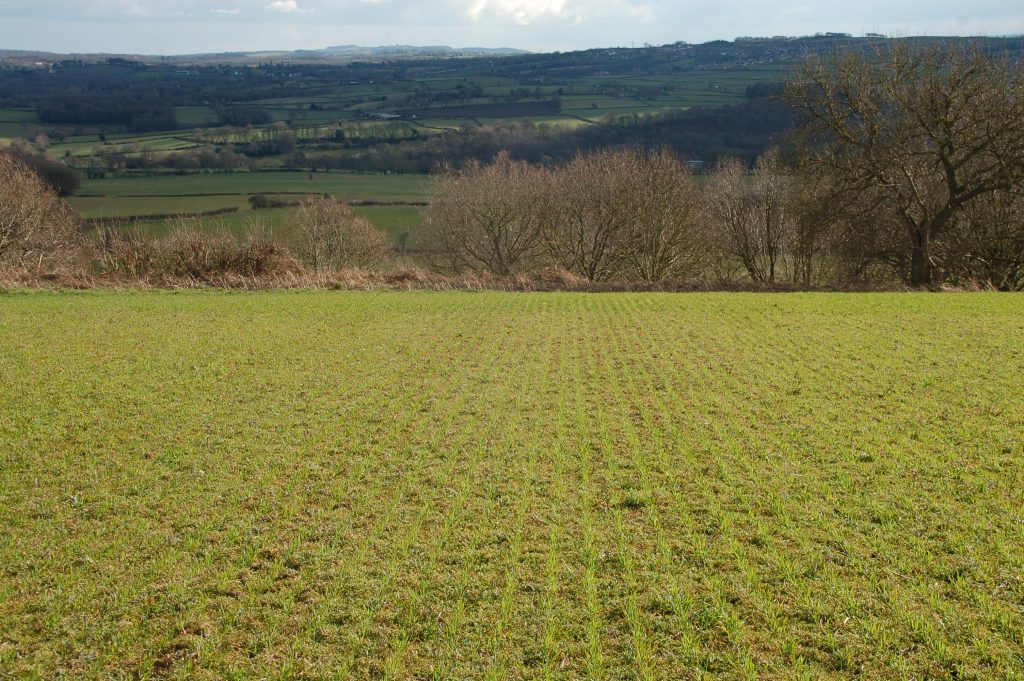
Our rotation initially included a 2-year red clover ley followed by 3 years of cereals, typically a winter wheat, a cover crop into spring barley, and a cover crop into spring oats.
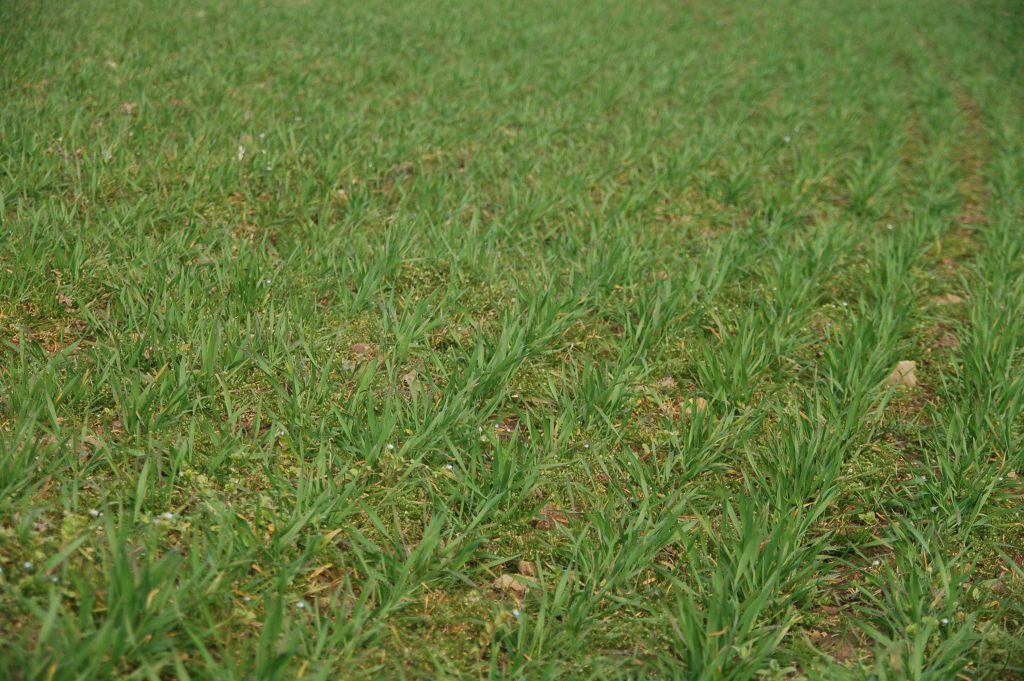
The soil has taken time to recover and we’re hoping that incorporating longer-term herbal leys of 3 or 4 years with a white clover can aid this recovery. To help manage our fertility, we have started growing a fertility-boosting all-year cover crop after our second cereal crop, which we hope can fix nitrogen (N) efficiently and give us the nutrition we need for another 2 cereal crops before re-stablishing a herbal ley. We tried this fertility cover crop for the first time last year (2024) and were really pleased – we planted a mix of oats, beans and vetch and they grew together wonderfully. They were so healthy, and grew so much biomass, which was all mulched in. We’re still very much in the experimenting phase, and it takes a long time to see the consequences of our management decisions. We’re also experimenting with a clover living mulch under our cereals in the later part of the rotation, to help with additional fertility. We are experimenting with bi-cropping, for example oats with beans, which can help with fertility, weed burden and soil structure. We plant winter cover crops in between any cash crops and bring in a neighbour’s sheep flock to graze them in late winter.
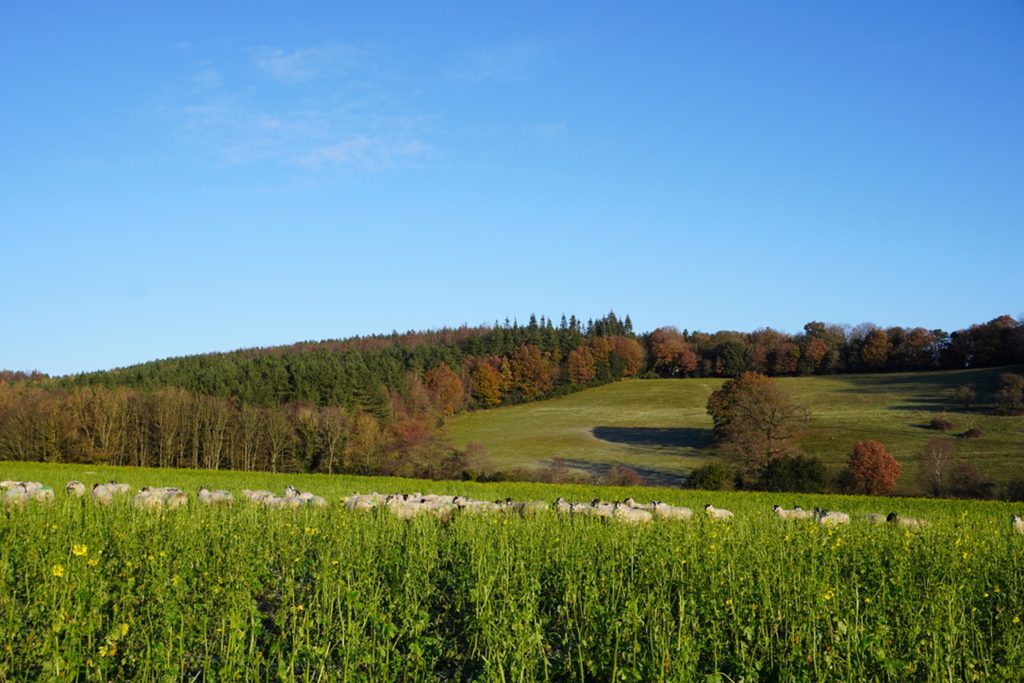
We have always been keen to produce grains for people, and we aim to produce high quality milling wheats that can supply local mills. Our oats go to an oat mill to produce rolled oats. Our first wheat typically yields around 5 tonnes per ha – at a protein spec good enough for milling. Later in the rotation we use heritage wheats which we find are less hungry for nutrition than modern varieties. We’re trying to get as close to the end customer as possible, which is helped by being a part of the Yorkshire Grain Alliance (YGA), a collaboration of farmers, millers and bakers. A large portion of our milling wheat goes to Yorkshire Organic Millers – members of the YGA. Recently we’ve been able to palletise one tonne bags milling grain and send them by courier to a small mill in Nottingham called Nottingham Mill Co-op. It has been nice to have been able to meet the miller – she is milling only the single grain we send her, not a blend, and producing it in bags for artisan bakers to use. If the crops that we grow don’t meet milling spec, or the land is in conversion to organic, there is an organic dairy in north Yorkshire that we sell our organic grain to as feed.
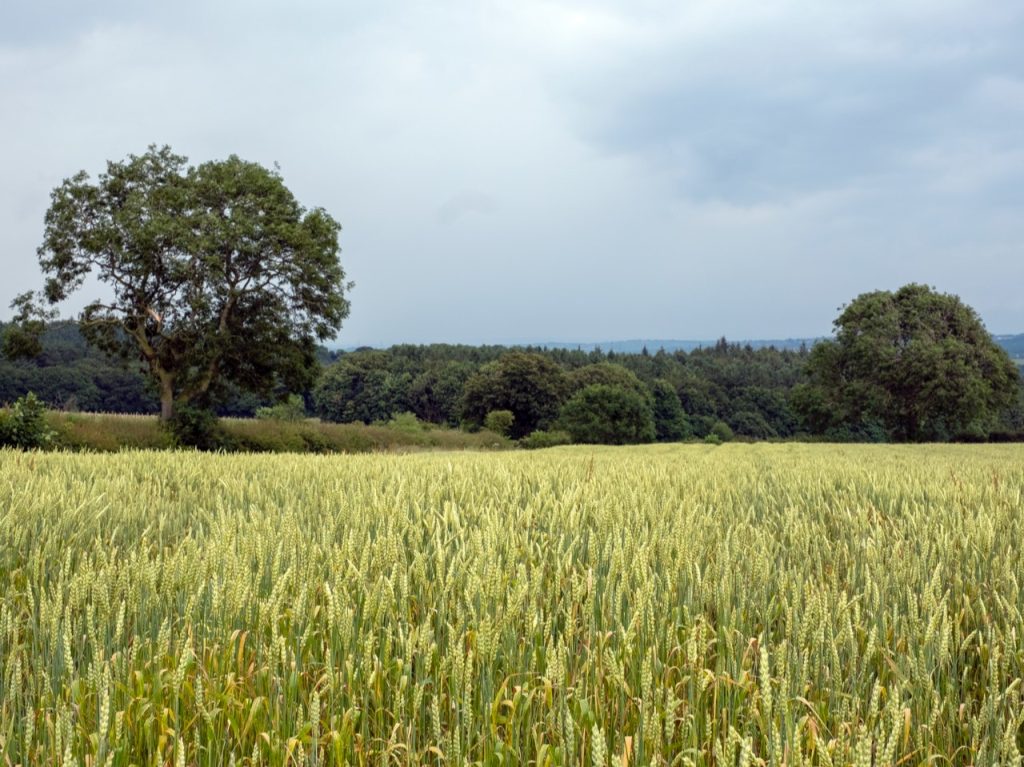
Sustainability in practice
Whilst organic farming can provide many environmental benefits, we believe it’s important to keep considering ways to improve the health of our land. Some key areas we have been focussing on include cover crops, bi-cropping, agroforestry and living mulches.
Cover crops
Cover crops for us have made a big impact on the health of our soil over quite short periods of time. With a very wet autumn in 2023, we failed to establish some crops in both autumn and spring. Instead we planted a summer cover crop, which included berseem clover, fodder radish, buckwheat, mustard and phacelia.
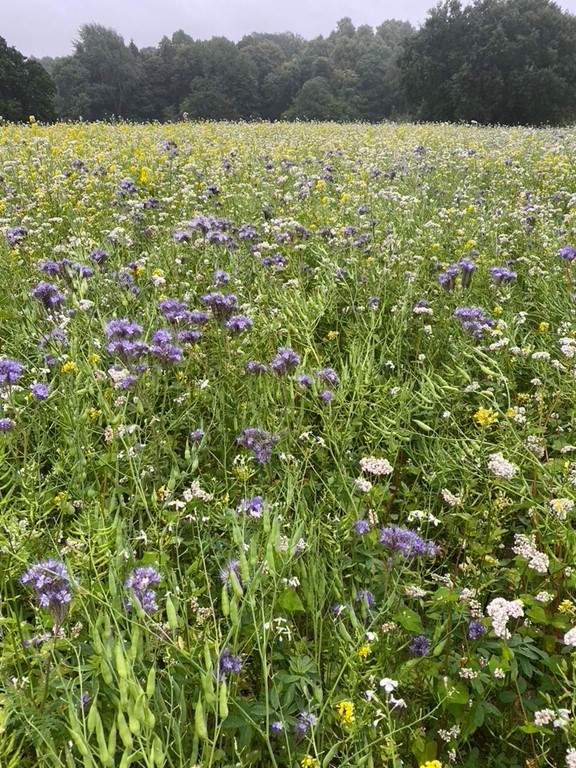
Despite the heavy soils, the cover grew very well, producing a large amount of biomass and an abundant pollinator source. In our worst fields, we followed this summer cover mix with a winter cover crop. The effect the following spring when we attempted to drill a spring crop seemed miraculous – the soil had really improved its structure, and the spring crops established very well. We’d like to keep experimenting with cover mixes, learning which plants to use for different advantages, for example how we can use cover crops to help convert locked-up stores of phosphate, to plant available phosphate. We have had failures with cover crops too – when cereals have been harvested late, it has been difficult to establish winter cover crops in time for them to grow substantially before the winter. This is another area we hope to improve as we continue our farming journey.
Multi species cover crop. August 2024. Courtesy of the Frasers
Bi-cropping
For us, bi-cropping is a way to help produce high-quality milling wheats and strong oat crops by providing additional N. Legumes like beans are an excellent companion – boosting protein content and supporting yields.
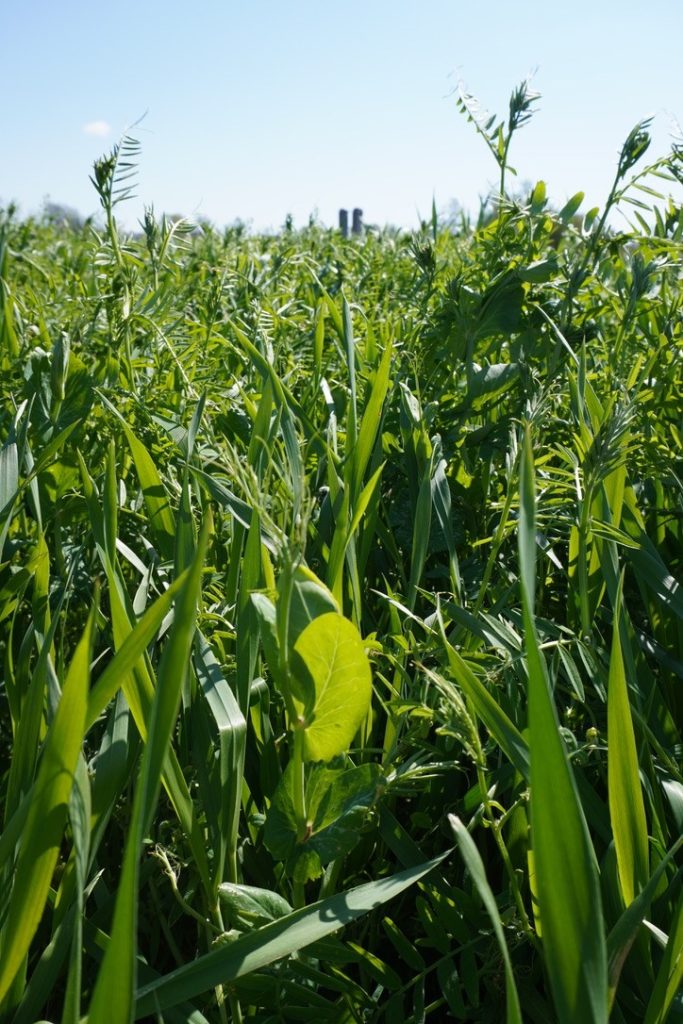
We’ve experimented with wheat-bean and oat-vetch mixes, and the latter thrived on heavy land early in our organic conversion. This spring (2025), we’ve sown a bean-wheat bi-crop and hope to supply the wheat to Yorkshire Organic Millers. Beyond nutrient cycling, companion crops bring wider ecosystem benefits. Legumes introduce a burst of flowers into the fields, supporting pollinators and enhancing biodiversity. They also contribute a different root architecture – beans, with their deep taproots, access nutrients far below the reach of cereals like wheat, improving overall soil structure and resilience.
Polyculture of beans, oats, and vetch. May 2024. Courtesy of the Frasers
Agroforestry
We have planted a 50-acre (20-ha) silvoarable system in one of our largest arable fields.
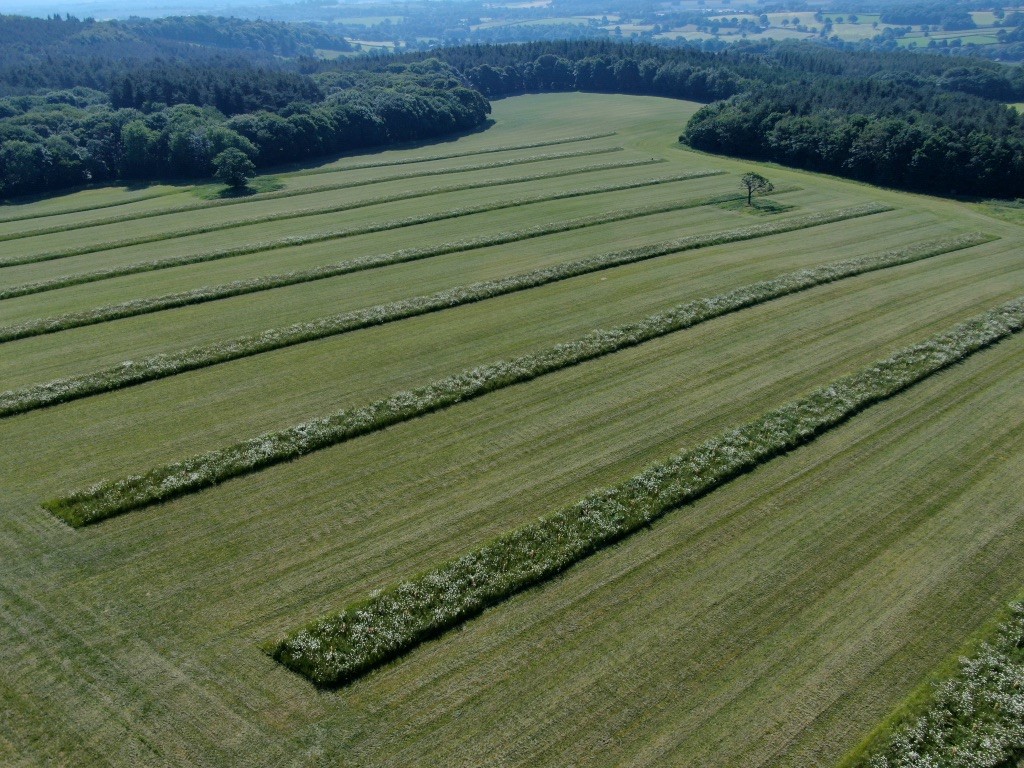
The alley cropping system includes 19 rows of trees, taking up around 10% of the total field area.
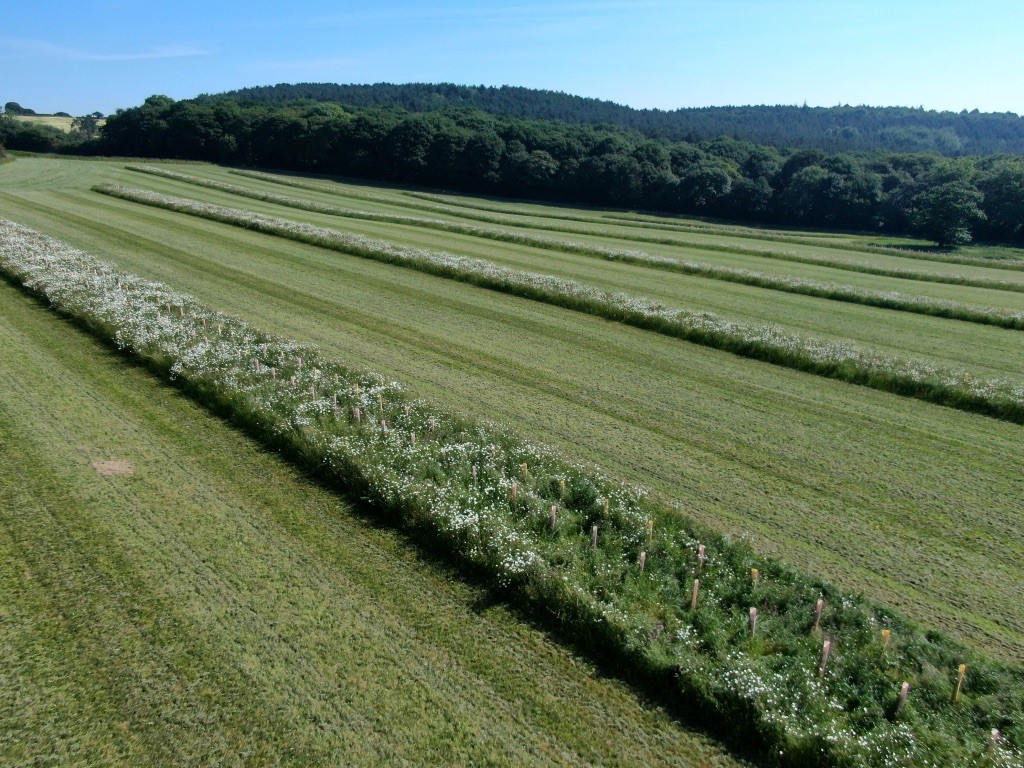
The tree species, which include alder, sweet chestnut, sycamore and hazel, were chosen for their value as coppiced wood. Our aim is to harvest on a long rotation, producing woodchip that can be reused on the farm or sold – adding long-term value while keeping shading to a minimum.
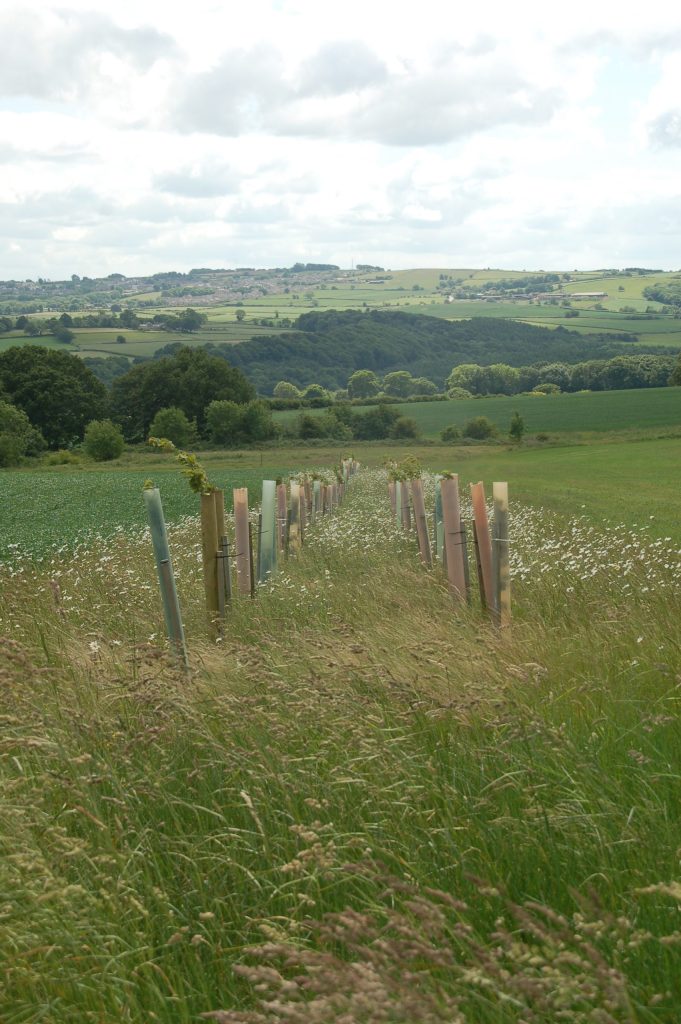
The trees are planted in 6 metre (m) wide wildflower strips, which are repeated every 24 m across the field. These wildlife corridors are already supporting small mammals like voles and shrews, attracting pollinators, and contributing to a more balanced ecosystem. What was once a single, open block of cropping land is now a much more dynamic, diverse environment.
Silvoarable agroforestry strip. June 2025
The benefits are both ecological and agronomic. The trees help buffer wind, which is vital on such an exposed site – protecting crops at critical growth stages and reducing grain loss at harvest. Root systems will, over time, help with drainage in our heavy soils by transpiring excess moisture more effectively than annual crops, while also increasing water availability during dry spells. We’re also seeing potential for extended growing seasons: studies suggest soil temperatures remain warmer between tree rows, allowing for earlier sowing and later harvests – great for carbon cycling and yield stability.
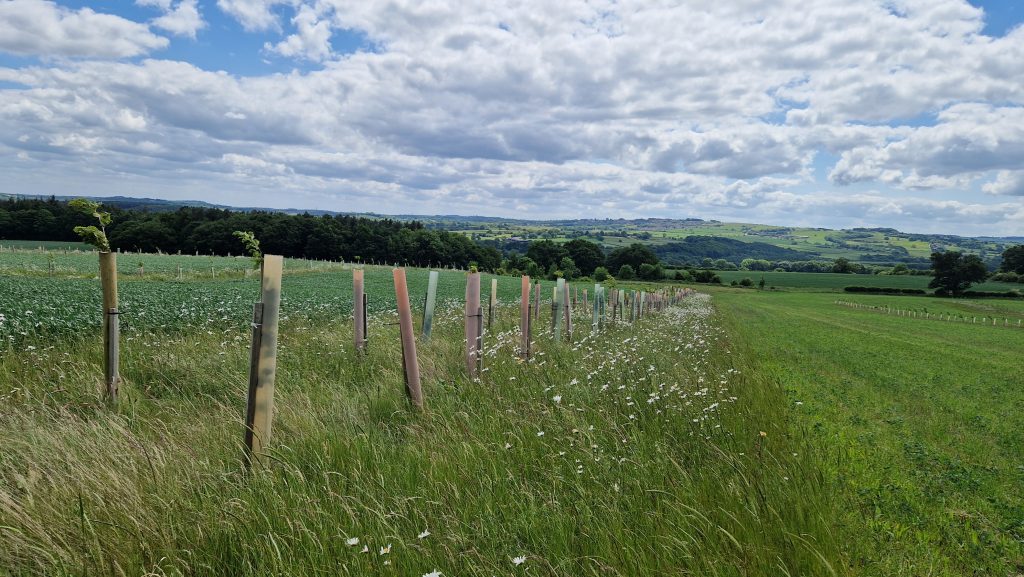
Ultimately, our original aim was to improve the arable land by planting trees. What’s rewarding is understanding all the additional benefits- from habitat creation to carbon capture, and even community involvement. Volunteers helped with the planting and maintenance, creating a sense of shared ownership and engagement with the landscape. Agroforestry has changed the feel of the farm – not just how it looks, but how it functions.
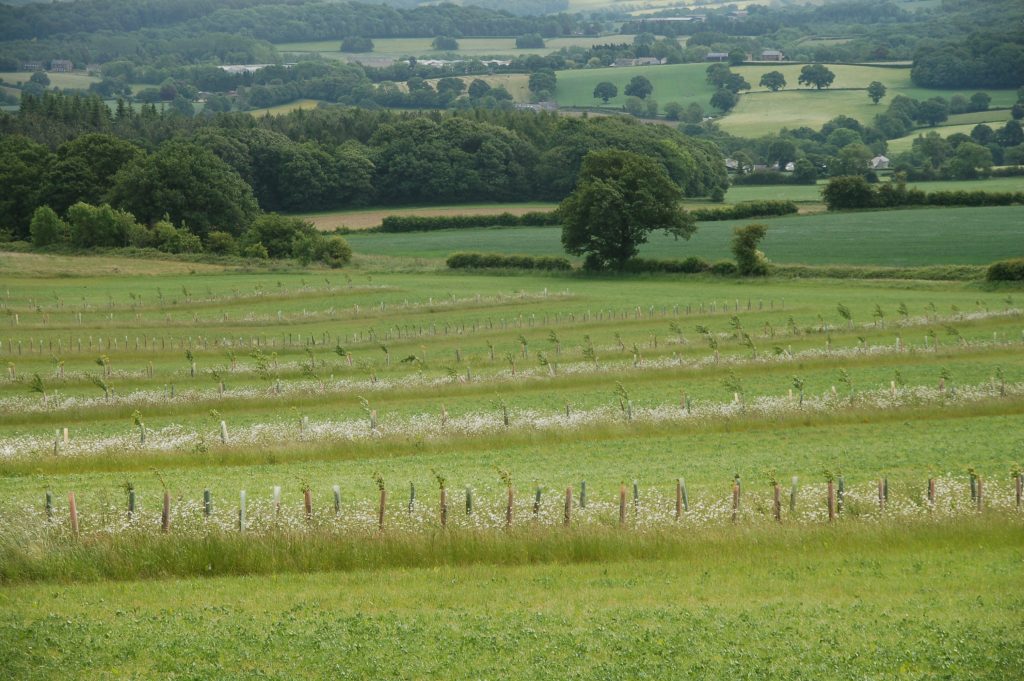
Living mulches
We are early on in our journey, with a lot of experimentation to develop a consistent, profitable and successful method.
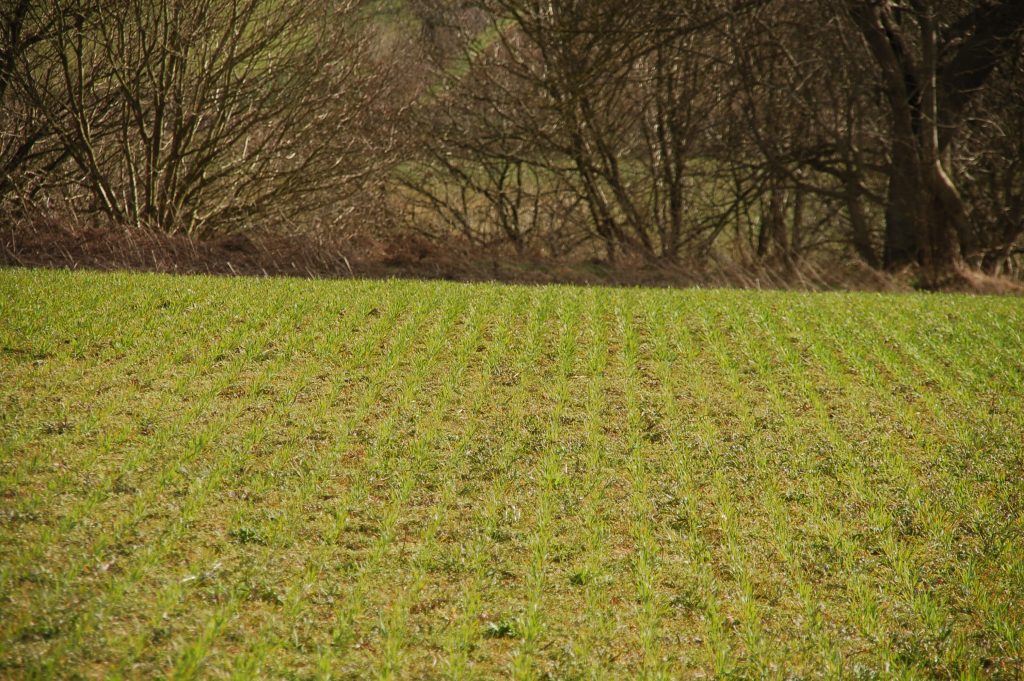
Initial 2023 trial
We tried undersowing a medium white clover (Jura, 5kg/ha) under a standing crop of spring wheat in May 2023. Initially the rain did allow enough moisture for the clover to germinate but then a dry spring led to the clover dying off due to a lack of water and light availability at a time when the spring wheat was well established. This led to a patchy establishment of the mulch, with clover growing only in the thin parts of the wheat crop. We continued the second year of the experiment in only one field where the mulch had establishment relatively well, and we direct drilled winter wheat following a hard grazing with sheep. Unfortunately, the wet weather in autumn 2023 led to very delayed drilling (19 December). The wheat was a modern milling variety with a prostrate growth habit. Unfortunately, the clover mulch grew very well in its second year, giving significant competition to the wheat, which ultimately produced a very low yield with too low a protein for milling. There were clearly many improvements to make, from cash crop management to better establishment techniques for the clover.
Our two key takeaway points from this experience were:
- Establish the understory before the wheat.
- Choose a better cash crop as a companion to the living mulch.
We’d observed through the LiveWheat trial we are involved in that Maris Wigeon has an early upright growth habit. It also produces generally above-average protein for its yield, so aligns well with the milling output of the wheat.
After this trial in 2023, we were successful in a bid for research funds from UKRI Innovate UK to investigate the optimal understory species mix and management. This has allowed us to continue our trial work on living mulches.
2024 trial
The main objective of this trial is to investigate which understory species is the best companion to pair with wheat or another cereal crop, considering the quality and quantity of both the cash crop and the living mulch.
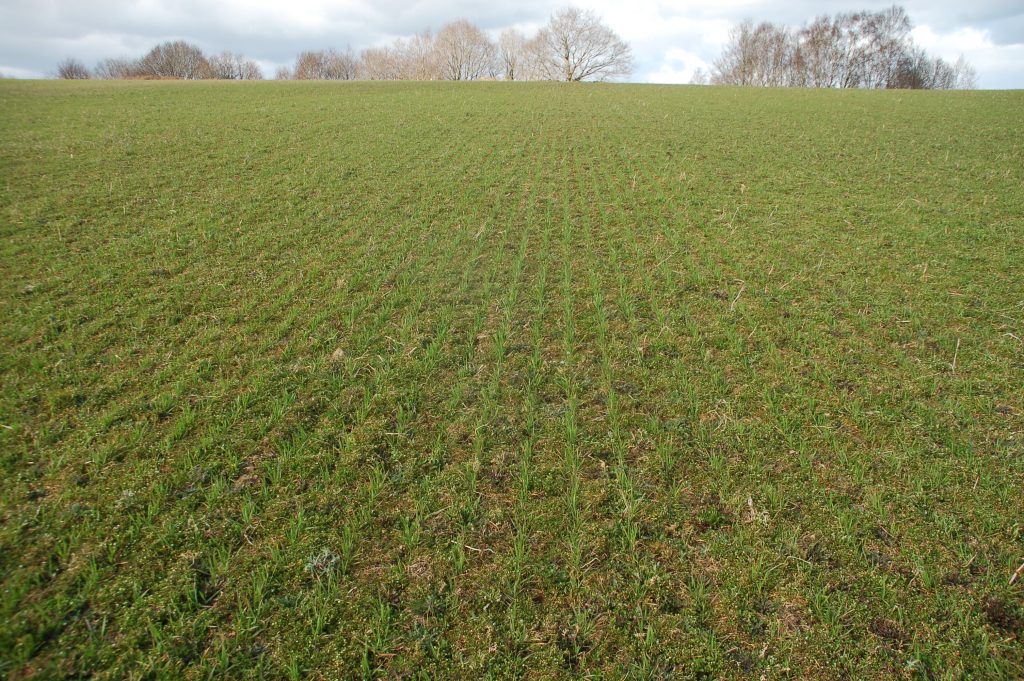
There are 5 different understorey mixes. All species are leguminous. The clovers we are trialling are all small leaf white clovers (Trifolium repens) – given our previous poor experience of combining wheat with a medium leaf white clover. One white clover was paired with bird’s foot trefoil (Lotus corniculatus) for root diversity and potential for larger amounts of N fixation, biomass, and weed suppression.
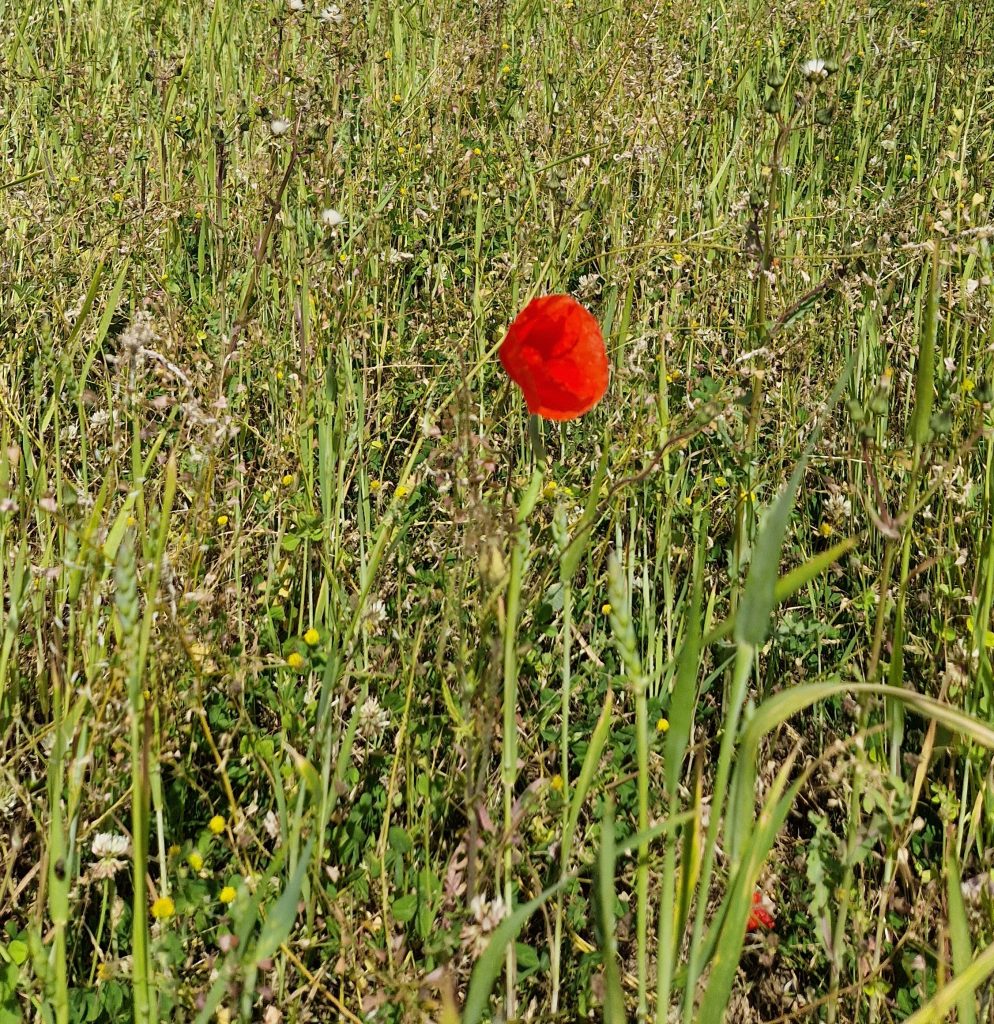
One white clover strip was paired with black medick (Medicago lupulina) for the tap root. We had learned that Frederik Larsen in Denmark is successfully managing a lucerne living mulch with arable crops, albeit with the use of a herbicide to check the growth of lucerne; he attributes the success to the complementary, rather than competing, root zone architecture of the cereal and the leguminous tap root. One white clover was paired with annual Persian clover (Trifolium resupinatum) as we hoped the persian clover would germinate and grow faster, acting as a ‘nurse’ clover for the smaller perennial white clover, before dying off over winter.
Black medick growing in a trial strip. June 2025. Taken by Alice Farmery
Late-summer living mulch establishment
In the preceding year, the trial field grew a fertility-building all-year N-fixing cover crop of beans, vetch and oats, which was incorporated (flail mown) on the 14th of June, after the crop had reached flowering stage and before a lot of the grasses and perennial weeds had fully set seed. The aim was to have maximum N fixation and above-ground biomass, with mechanical opportunities for weed control mid rotation. After flail mowing, we left the residue on the surface, partly to protect the soil, and because the oats did re-grow a bit – it was nice to try and retain that living root in the soil for as long as possible.
On July 6th, we had a very superficial pass with disc rollers to start incorporating some of the huge amount of crop residue on the surface into the top soil profile, so that the worms and larger soil life would be able to pull it down and create soil organic matter. On August 2nd, we used a Kongskilde Delta to cultivate the full soil surface and create a seed bed. This brought us into the trial period with a clean field, with lots of N available. Drilling took place on 9th August 2024 with a combi drill and was rolled immediately afterwards.
Trial strips
- Strip 1 – Rivendel small-leaved white clover (8 kg/ha)
- Strip 2 – Aberace small-leaved white clover (4.2kg/ha) with bird’s foot trefoil ‘Leo’ (3.2kg/ha)
- Strip 3 – Aberace (8 kg/ha)
- Strip 4 – Aberace (4.2kg/ha) with black medick ‘Virgo Pajbjerg’ (3.2kg/ha)
- Strip 5 – Aberace (8 kg/ha) with Persian clover ‘Logudoro’(2kg/ha)
- Strip 6 – Control – no understory drilled
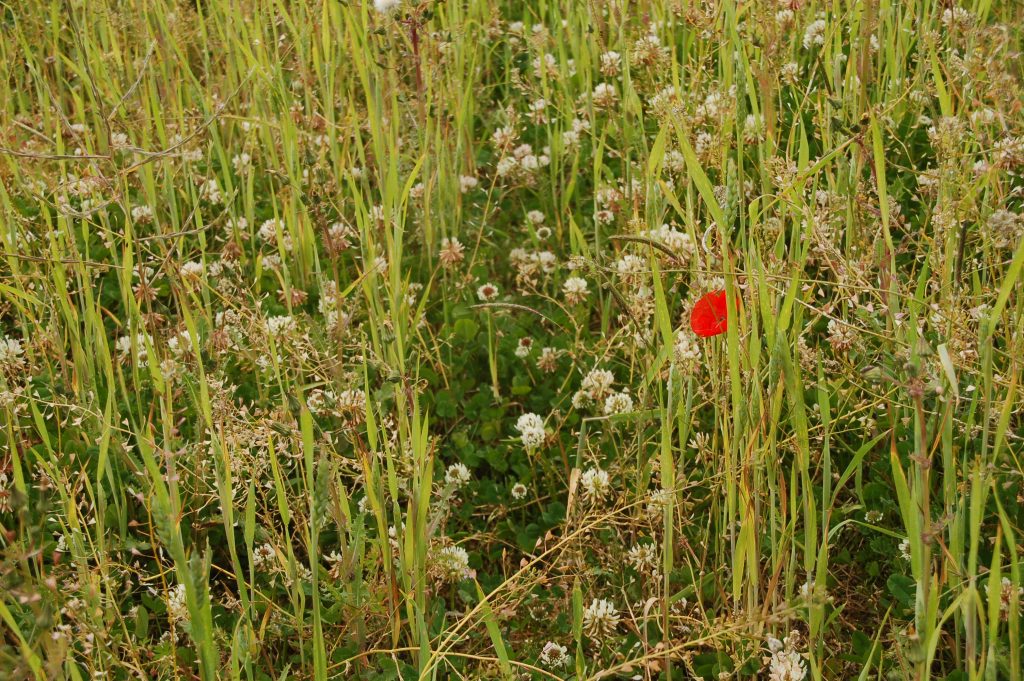
Our seed rates were chosen with the advice from Cotswold Seeds (who kindly provided the seeds for the trial), other farmers, previous Innovative Farmers trials, and our own experience. The rates for black medick and bird’s foot trefoil were deliberately low as they have the possibility of growing too tall and interfering with the cash crop harvest.
We did attempt to establish buckwheat over the clovers to provide a nurse crop and prevent excessive weed growth, but this did not work well, probably due to being a large seed which we broadcast over the combi drilled strips.
After the living mulch had established, we used a Sky direct drill for the Maris Wigeon, drilled at 625 seeds per square m (300 kg/ha) on October 24th 2024.
Spring living mulch establishment
A second part of our 2024 trial includes comparing establishment of the living mulch in late summer/early autumn versus spring. In a second field we have planted the same 5 different living mulch strips, but this time under sowing them with a spring tine harrow with air seeder into a winter established Maris Widgeon wheat. This field had the same treatment the preceding year with an all-year fertility building cover crop. This second part of the trial will help us to observe if any of these varieties are also well suited to this more traditional method of establishing small legumes under a cereal in spring.
Observations
June 2025
In hindsight, sowing the small, slow-growing perennial clovers in August proved ambitious – as annual weed seeds were primed to take off in the warm, wet conditions at this time. Weed pressure surged early on, making establishment of the mulches tricky. But over winter, the white clovers quietly pushed on, and – somewhat unexpectedly – the Persian clover persisted through snow and hard frosts. The winter wheat has stayed just above the clover strips, though it’s showing signs of N hunger. Now, heading into summer 2025, the mulches are beginning to bulk up – but so are the weeds, making for a dense and chaotic mix. It’ll be fascinating to dive into the data the Organic Research Centre are collecting, which will include percentage mulch cover, biomass, and weed burden in each strip. Post-harvest, we should also have a clearer picture of how all this effects crop yield and quality.
Motivations
Taking on the farm coincided with both of us working as junior doctors in the hospital. It gave us a rare, dual perspective of agriculture and healthcare. There seem to be overlaps between the rise of chronic disease and the declining health of the population, and the rise of agricultural challenges like soil degradation and pest pressure. We began to realise that farming systems might be part of the human health problem – but they could also be a key part of the solution. That thought process has shaped everything for us. We realised we could use the farm as a force for better health, starting with improving the soil. It’s why we’ve leaned into regenerative and agroecological principles. Having a medical background gives us a unique lens: we understand how vital nutrient-dense food is to health – something many doctors aren’t trained to see, and many farmers aren’t encouraged to think about. Yet farmers are frontline health workers too, if their food gets to the right people in the right way.
When we began, we were working from scratch. We had no equipment, no customers, and no prior enterprise. That clean slate gave us creative freedom – to design a farming system rooted in our values, informed by science, and driven by a deep sense of purpose. Early inspiration came from books on soil, carbon, and climate – challenging the industrial farming model and offering hopeful alternatives. But it wasn’t until we began farming ourselves that we fully understood how everyday decisions on the land shape the health of people, soil, and planet. We’ve drawn huge inspiration from visiting other farms – seeing the work of people like John Pawsey, Mark Lea, Ed Horton, and attending events like Groundswell. One of the most encouraging parts of the regenerative and organic farming communities is their openness. Farmers trying to do things differently are generous with their knowledge. For us, regeneration and organic are not at odds. Regenerative farming is about restoring ecosystems – particularly soil. Organic is one route to get there, though not the only one.
Future goals
In the future, we’d love to connect more directly with the public. I (Hannah) am working on a platform called Cultivating Health, which brings together findings from my Nuffield Scholarship – exploring how farming practices shape the nutritional value of food. It’s about bridging the gap between food producers and those seeking better health.
We’ve also realised the limits of arable-only farming. When we’ve brought livestock onto the land for short-term grazing, we’ve seen how transformative it can be – reviving underperforming areas with cover crops and temporary leys. Eventually, we’d like to introduce cattle. It’s part of a broader shift toward climate resilience.
Bringing in perennial crops and integrating ruminants makes ecological and financial sense. As weather becomes more erratic, diversity and low-input systems bring stability. Animals help us move nutrients around the farm naturally, building fertility, improving soil structure, and buffering against the yield volatility of monoculture. It’s about creating a sweet spot: high-quality arable crops nourished with organic manures, alongside a profitable perennial and grazing system.
We’re also exploring investment in a high-spec grain cleaning system – one that could help us consistently produce milling-grade grains, free from weed seeds and disease. That opens doors: potentially establishing an on-farm mill and developing a branded product, allowing us to tell our story directly to bakers and consumers. Being part of the YGA is a big step toward that.
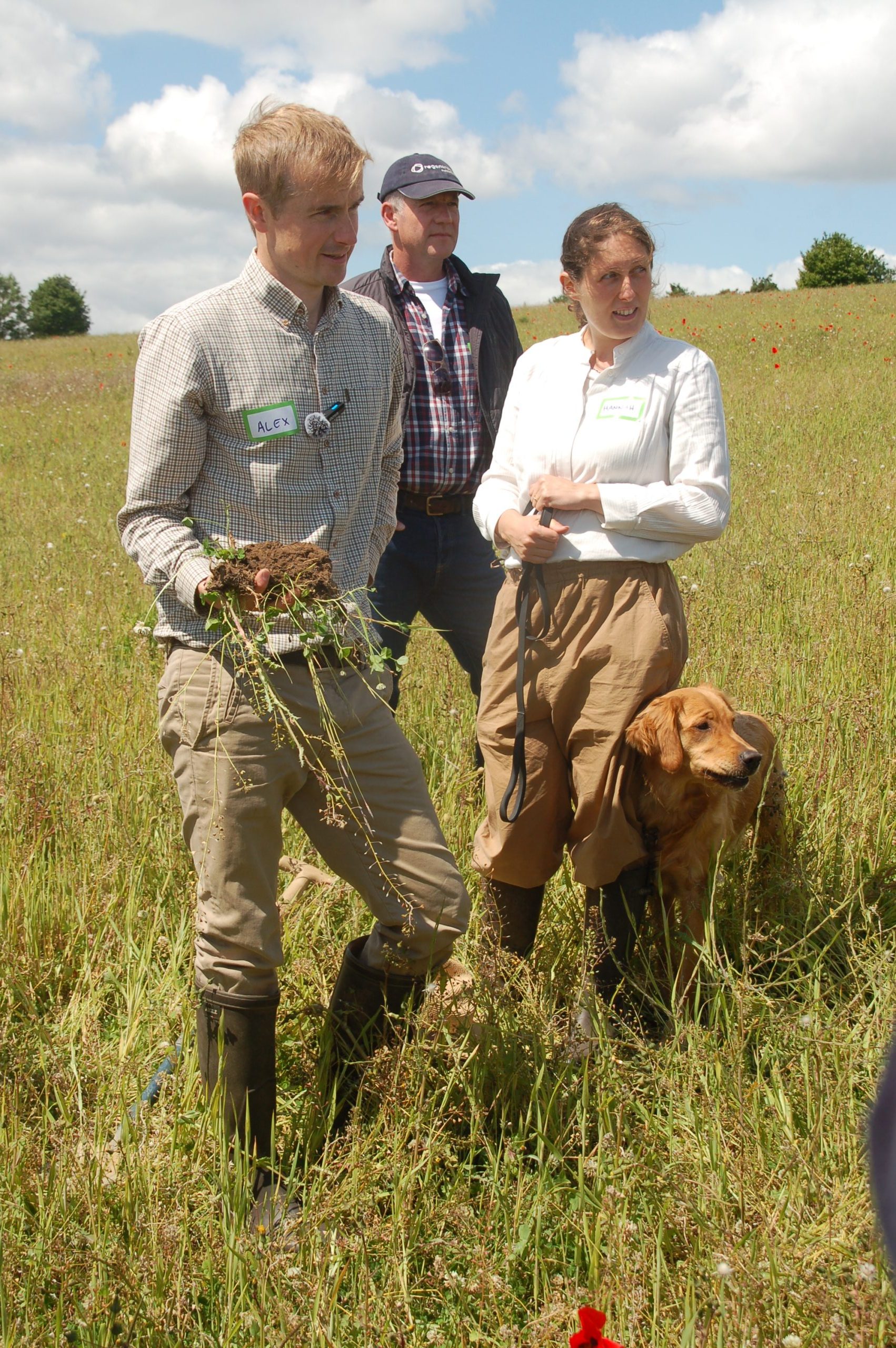
Farmer tips
- Start small and scale up cautiously. Trial new practices on a manageable patch of land – if it doesn’t work out, the setbacks are far easier to handle than if you’ve committed a whole field.
- Seek support where you can. Whether it’s tapping into the wisdom of a mentor, joining a farmer group, or joining a group experiment, having guidance makes navigating the unknowns far less daunting.
- Get involved in on-farm trials. Participating in research projects opens the door to practical learning and real-time insights. It’s also a great way to connect with other farmers tackling similar questions.
- Learn from others who’ve been there. If you’re planning to take a new direction, find and talk to farmers already on that path. Their experience can help you avoid pitfalls and build confidence in your choices.
All images where not stated taken by Janie Caldbeck. All Rights Reserved applies to all images
